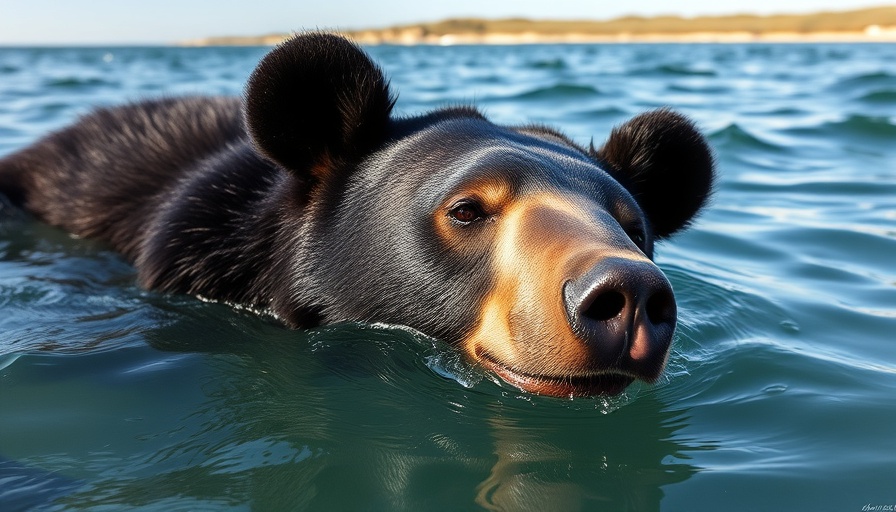
Bear Takes a Dip: A Summer Surprise in the Gulf
As families across the Gulf Coast head to sandy beaches for summer vacation, a surprising visitor captures the attention of beachgoers: a black bear spotted swimming in the waters near Naples, Florida. This unusual event, which went viral on social media, not only serves as a quirky reminder of wildlife encounters but also raises questions about the interactions between nature and summer activities.
Why Are Bears Near the Beach?
While bears typically roam the forests, their appearances near coastal areas are not entirely unheard of. They often wander further from their wooded habitats in search of food and water, especially during warm months. In doing so, it appears our four-legged friends are seeking relief from the heat—much like the throngs of beachgoers flocking to the ocean.
Local Wildlife and Beach Exploration
As people set off on beach adventures, it's important to remain vigilant about potential encounters with wildlife. The Gulf Coast region is home to diverse species that may wander onto beaches in search of food or shelter. Beach flags that indicate warnings about aquatic hazards like jellyfish or sharks take on a new layer when one considers possible bear sightings. This unusual bear sighting invites discussions about wildlife management and how communities can coexist with their natural neighbors.
Equipped for the Unexpected: Staying Safe at the Beach
With summer beaches bustling with families, knowing how to stay safe is paramount. While traditional warnings focus on sharks and jellyfish, becoming aware of wildlife can be equally crucial. Understanding beach flag warnings is a necessary part of beach safety. Double red flags indicate closures, while a purple flag warns of dangerous marine life. A vigilant beachgoer should keep these indicators in mind, especially with wildlife encounters becoming more newsworthy.
Implications for Wildlife Conservation
This bear swimming in the Gulf highlights the ongoing relationship between human activities and natural habitats. It's a crucial reminder that as development expands, wildlife often adapts by wandering into human-populated areas. This prompts larger discussions about conservation efforts and how communities can protect both their environment and their residents. Understanding this dynamic can help in forming thoughtful policies for the preservation of wildlife.
Engaging with Nature
The sighting of a bear in the Gulf may prompt curiosity and concern, but it also inspires a deeper appreciation for our natural surroundings. Whether it’s through fishing trips, boating experiences, or simply enjoying the beach, individuals have the chance to engage with nature positively. Coastal adventures should remind us to respect wildlife while enjoying the beauty of our environment.
As the summer unfolds, let's keep mindful of our surroundings, embrace the unexpected moments, and work toward preserving the natural beauty of the Gulf Coast for generations to come.
This delightful bear sighting might be just the summer story you never knew you needed!
 Add Row
Add Row  Add
Add 




Write A Comment